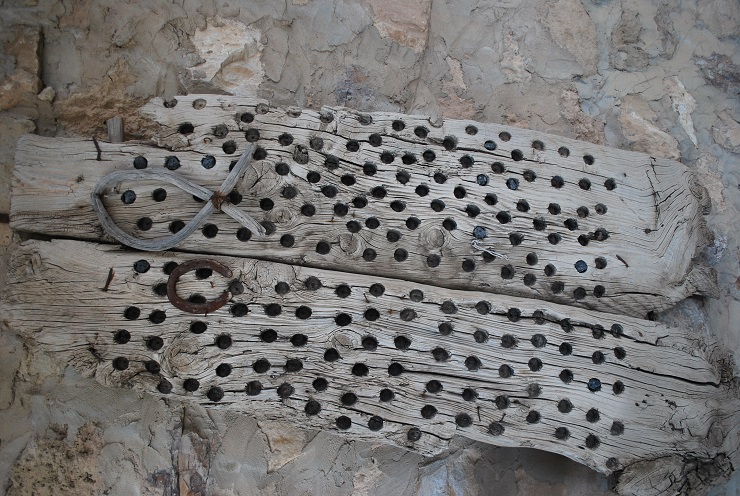One of the differences between garden farmers and those to whom we refer as field farmers lies in the technologies that are used for the cultivation of the land.
Garden farmers cultivated their relatively small plots of land manually, with the help of simple tools. Field farmers use a much wider range both of procedures and of tools. The principal ones comprise the ploughing method of soil preparation, irrigation systems, fertilisation and the building of terraces. The pulling force of animals is also often used in agricultural work. Agricultural societies change the landscape in a far more intensive manner than gardeners do. This has to do with the fact that they are cultivating much larger areas of land.
 |
| Agricultural technologies also used to be based on pulling force of animals. This method was also used in the Near East for activities that would be atypical in regard to Central European agriculture. Pictured is a wooden sleigh to the underside of which a lot of flint flakes are attached. The sleigh was pulled by animals to run over harvested cereals from which the grain was separated in this manner. Photo by Petr Květina, Jordan 2013. |
This is also followed by other specific cultural features. Agriculturalists are frequently able to produce enough food not only for themselves but also for those who are not agricultural specialists, which means not only for craftsmen, but also for rulers, soldiers, officials or priests. This “surplus product” can become a medium of exchange, in the form of settling a land tax or paying a fee. In addition to the hierarchisation of the society the classification of the settlement system and the development of towns may also occur.
However, there is no clear boundary between garden farmers and field farmers. Considered as field farmers who cultivate the land intensively in a wide area of their settlements are, for example, the Hopi Indians who live in the southwest of North America. In order to ensure that there is sufficient moisture they created sophisticated irrigation systems, which more-or-less ranks them amongst the field farmers, though in their case neither societal centralisation nor any development of the redistribution system occurred.
Want to learn more?
- Diamond, J. 1997. Guns, Germs, and Steel: The Fates of Human Societies. W.W. Norton & Company.
- Kottak, C. P. 1991. Cultural anthropology. New York: McGraw-Hill (5th edition).
 Archeologické 3D virtuální muzeum
Archeologické 3D virtuální muzeum

.jpg)